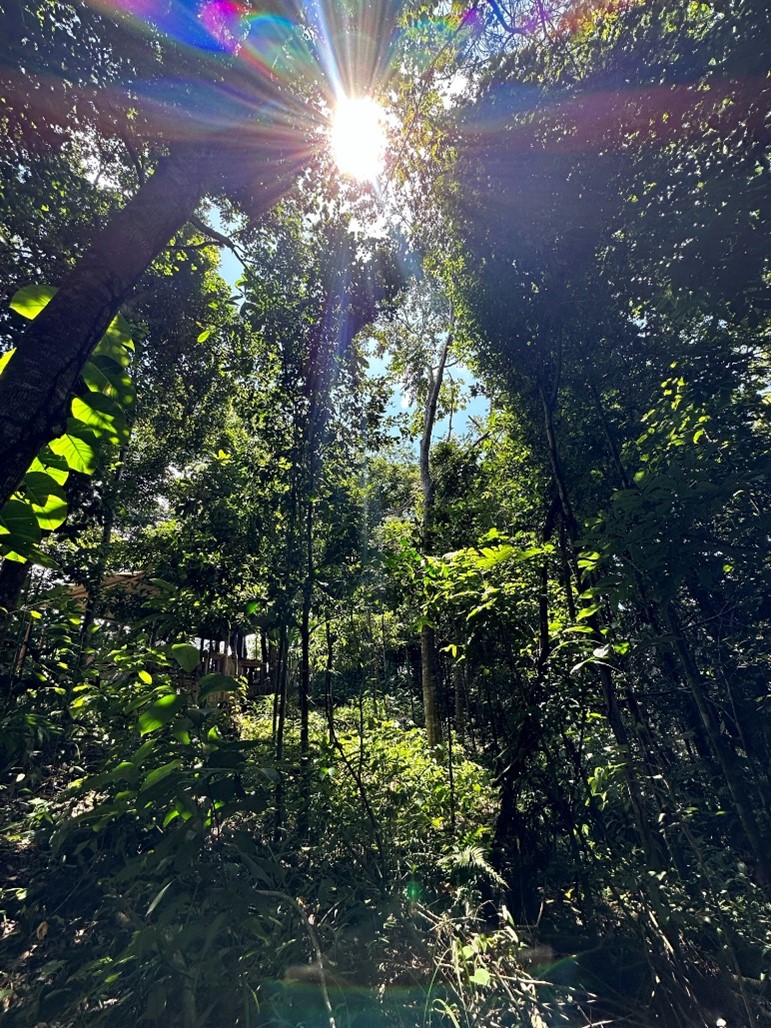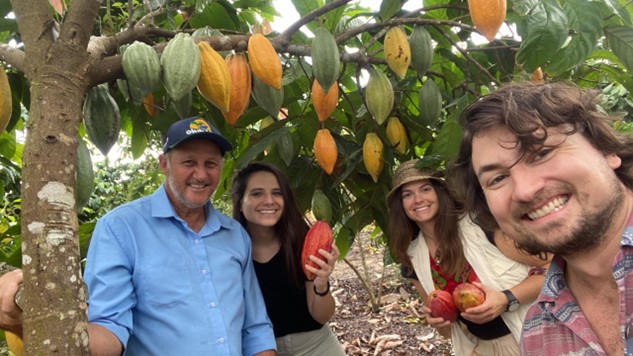Evidence on scaling forest restoration from the Atlantic Forest Restoration Pact in Brazil
Published in Earth & Environment, Sustainability, and Economics


|

|
Why did we write this paper?
We see a lot in the news these days about how different organizations have “planted millions of trees” as their contribution to climate change mitigation. In the Conference of the Parties in Glasgow in 2021, over 100 countries signed a commitment to halt and reverse forest loss by 2030. Agriculture and land use change are indeed very important contributors to carbon emissions, and they have tremendous potential to contribute to the solution. It’s clear that planting trees has many benefits, especially globally, but who shoulders the costs? Where are all these trees going to be planted? Who is going to do it, and will they make sure the trees survive? What if they had other plans for that land – like producing food to feed their families? Or growing crops to sell to the world?
We wrote this paper to examine the long-term effects of a decentralized forest restoration effort in Brazil. The goal was to understand if it really resulted in new forest over the longer term, and whether there were lessons to learn that might enable other forest restoration efforts to be more effective.
What did we do?
The Atlantic Forest Restoration Pact (PACTO) in Brazil, a large-scale restoration coalition targeting private land in the Brazilian Atlantic Forest (BAF), was interested in working together on an evaluation of the impact of their program. PACTO is comprised of over 250 stakeholders, including non-profit organizations and government entities. They shared with us the geographic locations of the land that they were helping to restore, and we combined these maps with publicly available information on forest cover change produced by MapBiomas, an amazing non-profit collaboration of Brazilian scientists.
In order to create a setting where we could attribute causal impact to the restoration efforts, we first found areas of land that were very similar to those that were enrolled. We did this using a statistical method called “matching.” With this sample, we were then able to evaluate trends in land cover change before restoration began (2000-2009), to those after the restoration started (2010-2018), inside of the parcels that PACTO collaborators were working with, compared to those that were similar but not participating in restoration.
We also visited the Atlantic Forest, spoke to local stakeholders, and pieced together the “why” from stories of people involved. These conversations revealed key drivers of the forest restoration program and why it worked in Brazil’s most densely-populated and degraded biome. We interviewed farmers who were participating in the program, consultants who helped those farmers design their restoration projects, tree nursery technicians who cultivate the rare native species that help make a forest a forest, and large company owners who are working to integrate restoration into their management of huge tracts of productive land.

author), first from right, and Thais Diniz Silva (translator), second from left.
What did we find?
First of all, the statistical tests showed that the effort works. Land enrolled with PACTO had much more forest restoration on it than the land with which we compared it – the effort increased net forest restoration by 10-20 percentage points, and we expect that to be an underestimate of the full effect, because it takes a long time to make a forest!
Through our conversations with stakeholders, we learned that effective restoration requires a combination of cost-sharing, enforcement, well-located tree nurseries, technical assistance, and landowner-government trust. We learned about an environmental prosecutor’s tireless pursuit of eucalyptus producers over illegal deforestation in the region. We heard from the small team of landowner consultants who slowly earn the trust of farmers before offering restoration assistance. And we also spoke to the tree nursery technicians who assiduously survey and select native saplings for each farm’s ecological niche. Forest restoration is complicated and expensive. Our case studies highlight this complexity and also reveal lessons about how to make restoration programs across the world more effective.
What are the take home lessons?
Overall, we learned that forest restoration can be successful on a very large scale, but that it takes a whole lot of work. Successful forest restoration requires technical know-how, support for producers who are trading pasture for forest, and capable government regulators to implement regulations encouraging the conservation and increase of native vegetation according to existing laws.
Poster photo credit: Demis Bucci, CC BY-SA 3.0 https://creativecommons.org/licenses/by-sa/3.0, via Wikimedia Commons
Follow the Topic
-
Nature Communications

An open access, multidisciplinary journal dedicated to publishing high-quality research in all areas of the biological, health, physical, chemical and Earth sciences.
What are SDG Topics?
An introduction to Sustainable Development Goals (SDGs) Topics and their role in highlighting sustainable development research.
Continue reading announcementRelated Collections
With Collections, you can get published faster and increase your visibility.
Clinical trials 2025
Publishing Model: Open Access
Deadline: Dec 31, 2025
Women's Health
Publishing Model: Hybrid
Deadline: Ongoing




Please sign in or register for FREE
If you are a registered user on Research Communities by Springer Nature, please sign in